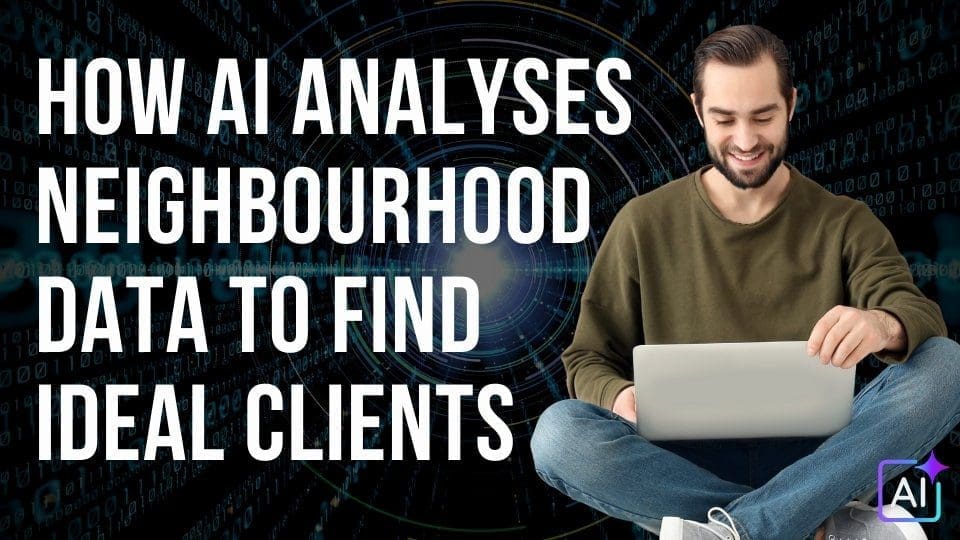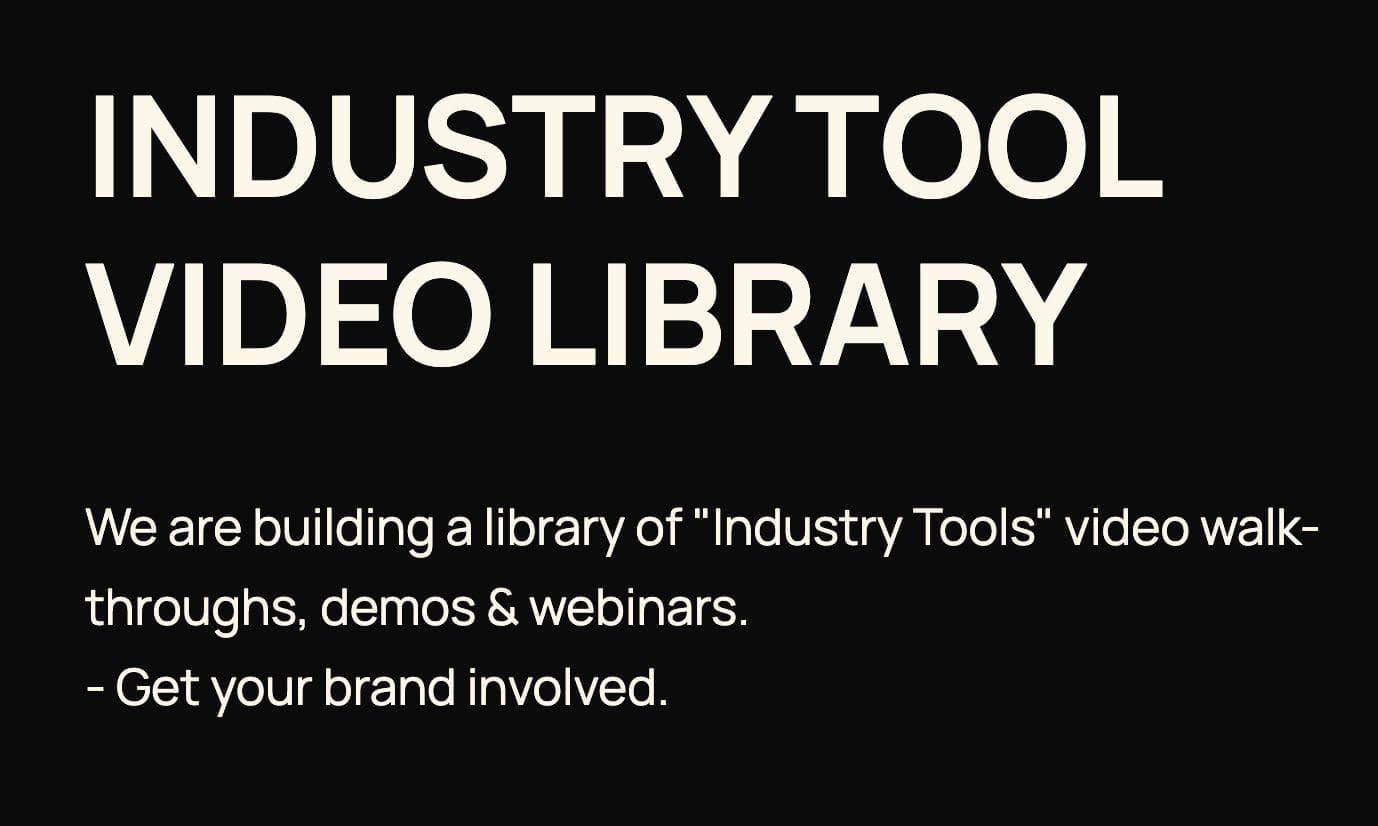AI Learning Centres:
- AI – Learn The Basics
- Get The Most From ChatGPT
- Branding in The Age of AI
- AI for Client Experience
- AI For Prospecting
- AI For Marketing
- AI For Listings & Ads
- Team Adoption of AI
- AI For PM
- AIO & Generative Search
- AI For Operations & Efficiency
- AI For Market Research & Analysis
- AI Ethics, Privacy & Compliance in Real Estate
Digital Marketing & Social Media Learning Centres:
Guides & Downloads

How AI Analyses Neighbourhood Data to Find Ideal Clients
Buyers and landlords expect you to know more than square-metres and price trends. They want the story of the street, the school catchment and the weekend coffee run. Artificial intelligence (AI) lets you deliver that story in seconds by crunching thousands of local data points and flagging the perfect fit for each client.
What AI “reads” inside every neighbourhood
AI platforms pull information from dozens of public and private feeds to build a living profile of each suburb. Key ingredients include:
Demographics – population growth, age mix, income and cultural diversity
Amenities & walkability – distance to parks, shops, beaches, health care and public transport
School results & zones – NAPLAN scores, enrolment caps, future rezoning plans
Crime & safety trends – police statistics and historical movement in offence rates
Market activity – median sale price, rental yield, days on market, upcoming developments
Lifestyle signals – social-media chatter, community events, Google review sentiment
These data streams are updated daily or weekly, giving you up-to-the-minute insights instead of last quarter’s averages. (rockhood.ai, nearmap.com)
Step 1: Collect the raw data
Most agents already subscribe to at least one data provider (CoreLogic, Domain, PriceFinder, Microburbs, Nearmap, etc.). AI engines simply plug into those feeds, add open-source material like ABS census tables, and scrape fresh signals such as new cafe reviews on Google Maps. Because the information is hosted in the cloud, you don’t need a server or a data scientist on staff – the heavy lifting happens off-site while you sleep.
Quick wins
Ask your current supplier whether they offer an AI add-on or API.
Check that the data frequency (daily, weekly, quarterly) matches your market pace.
Confirm that the provider follows Australian privacy laws when processing consumer behaviour.
Step 2: Build a live neighbourhood profile
Once the feeds are connected, the AI assembles a dynamic dashboard for each suburb. Think of it as a living fact-sheet that updates itself every time a new school report, crime stat or infrastructure announcement drops.
What the dashboard shows
A safety score out of 100, refreshed weekly
Latest school rankings and zone boundaries
Real-time median price and vacancy shifts
Planned transport or zoning changes on council agendas
Walk-score style ratings for shopping, green space and public transport
Tools such as Rockhood AI and Nearmap already package these insights into branded neighbourhood reports you can share with buyers at open homes. (rockhood.ai, nearmap.com)
Step 3: Match clients to the right suburbs
Here’s where the magic happens. The AI compares each buyer or landlord profile in your CRM against every suburb profile on the dashboard.
Preference matching – If a buyer ticks “public transport” and “good primary school”, the system promotes suburbs with high transit and school scores.
Predictive analytics – Using past sales data, the AI forecasts price growth or rental yield, flagging suburbs likely to outperform over the next three years.
Behavioural clues – It tracks online behaviour (listing views, email clicks) and boosts suburbs that align with that digital footprint. (dealwithitsolutions.com)
The result is a ranked list of suburbs for every client – green means “perfect fit”, amber suggests “consider”, red is “poor fit”.
Step 4: Score and segment your leads
Just as Netflix scores movies for user tastes, AI scores each lead in your database according to how closely their needs align with current neighbourhood trends. A seller whose home sits in a forecast “price-growth corridor” might earn a 92/100, signalling you should call today. A tenant with wish-list items that match only distant or unaffordable suburbs might score 40/100, moving them to long-term nurture.
Why lead scoring matters
Time-saving – Spend less time phoning cold leads.
Higher conversion – Personalised suburb insights show expertise and build trust.
Better client experience – Recommendations feel tailor-made, not generic blasts.
Hypothetical case study: one week in the life of “Sara the Sunshine Coast agent”
| Day | AI insight | Action | Outcome |
|---|---|---|---|
| Monday | Detects crime rate drop and new rail proposal in Palmview | Updates listing ad to highlight future rail link | 20% jump in online views |
| Tuesday | Flags family buyer whose search history shows “good high schools” | Recommends Buderim & Matthew Flinders Anglican College zone | Books Saturday inspection |
| Thursday | Notices investor lead researching hospital expansions | Emails Nambour rental-yield snapshot | Lead requests instant market appraisal |
| Saturday | Suburb dashboard shows weekend markets popping up in Maroochydore | Posts Instagram reel showcasing local lifestyle | Gains 50 new followers |
Key benefits for agents
Speed – AI sifts through millions of rows of data in seconds, giving you answers while the competition still googles.
Precision – Suburb suggestions are evidence-based, reducing buyer remorse and vendor discounting.
Competitive edge – Early hotspot alerts help you secure listings before the media catches on.
Personal touch at scale – Automated yet highly personalised emails keep clients engaged without adding hours to your week.
Getting started in three simple steps
Audit your CRM – Clean up duplicate contacts and add missing preference fields (budget, school need, commute time).
Choose a data partner – Compare local providers for data depth, update frequency and Fair-Trading compliance.
Pilot one suburb – Start with a single growth corridor. Feed the AI last year’s sales, run the matching engine and measure uplift in enquiry quality.
Tip: Revisit your privacy policy and obtain clear consent for behavioural tracking.
AI isn’t about replacing your local knowledge; it’s about turbo-charging it. By turning raw neighbourhood data into clear, client-ready insights, AI lets you focus on relationships while the algorithms handle the heavy maths. The sooner you integrate these tools into your workflow, the faster you’ll connect the right people with the right postcode – and cement your reputation as the neighbourhood expert who always seems two steps ahead.
Author – Ken Hobson.






